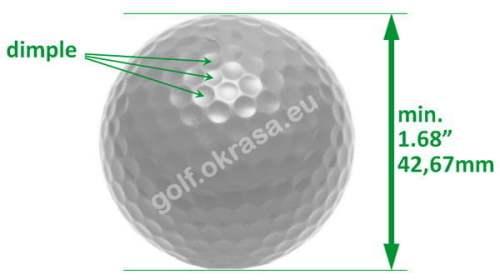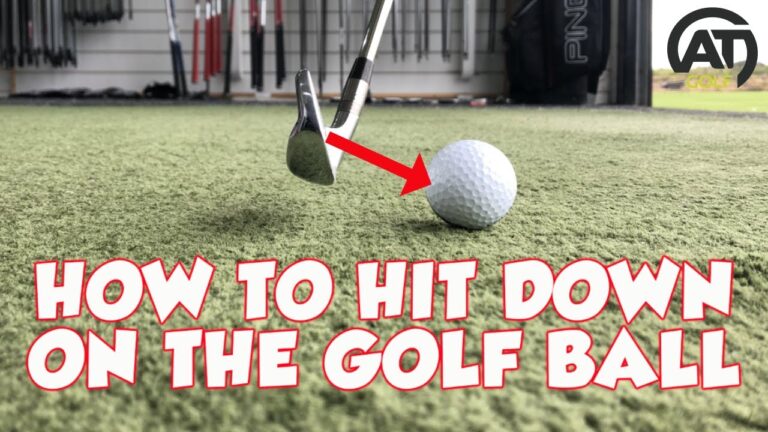How Much Does a Golf Ball Weigh?
When playing golf, one of the most important yet often overlooked factors is the weight of the golf ball. You may find yourself wondering, how much does a golf ball weigh? Officially, the maximum weight a golf ball can have is 1.620 ounces (45.93 grams), a standard set by the USGA and R&A. But this weight regulation isn’t just a technicality—it actually plays a crucial role in the ball’s performance. From how far it travels to how much spin it generates, the weight can impact everything. Whether you’re a beginner looking for more distance or a seasoned pro focused on precision, understanding the weight of a golf ball and how it affects your game is key. In this post, we’ll explore the ins and outs of golf ball weight, examining how it impacts performance, factors that influence weight, and how to choose the right ball for your game. Let’s get started!
Direct Answer: The Official Weight of a Golf Ball

To begin with, the official weight of a golf ball is specified by both the USGA (United States Golf Association) and the R&A (Royal & Ancient Golf Club of St. Andrews). According to their regulations, a golf ball must weigh no more than 1.620 ounces (45.93 grams). This is the maximum weight allowed, ensuring consistency across the board for golfers at all levels.
This weight limit has been in place for many years and remains unchanged despite advancements in golf ball technology. The reason behind this regulation is to maintain fairness and ensure that no player has an unfair advantage through equipment manipulation.
How the Weight of a Golf Ball Affects Performance
Flight Distance
The weight of a golf ball plays a key role in determining its flight distance. A heavier golf ball will generally travel a shorter distance than a lighter one. This happens because a heavier ball has more mass, which requires more energy to get it moving. When struck, the heavier ball will not carry as much momentum as a lighter one, resulting in a shorter flight path.
For example, professional golfers, who have faster swing speeds, often use golf balls with a more consistent weight distribution, which allows them to control the ball better despite the shorter distance. On the other hand, beginners or players with slower swing speeds may benefit from a ball that’s slightly lighter, as it will be easier for them to launch it with more speed and distance.
Spin and Control
In addition to distance, the weight of a golf ball also impacts its spin rate and control. Heavier balls tend to spin less than lighter balls because they require more force to change direction. This can be advantageous or disadvantageous depending on your play style.
- Spin: If you’re looking to generate high spin on the green, such as for shots that need to check quickly or stop quickly after landing, a lighter ball might give you the desired effect. Lighter balls tend to spin more, which helps with trajectory control and fine-tuning your game around the greens.
- Control: Conversely, players who prefer more control over their shots might opt for a heavier ball. While it may not spin as much, the added mass provides better stability and precision during the flight, allowing for more predictable ball behavior.
Feel and Feedback
Weight also contributes to how a ball feels when it’s struck, a factor that many golfers are quite particular about. Heavier balls tend to feel more solid on contact, which some players prefer because it provides better feedback. If you’re someone who loves that satisfying “click” sound or a firm feel on impact, a slightly heavier ball might enhance your experience. On the other hand, if you prefer a softer, more responsive feel, lighter balls might be better suited for you.
Factors Influencing the Weight of a Golf Ball

The weight of a golf ball isn’t a simple, one-size-fits-all measurement. Several factors influence it, from the materials used to the ball’s design. Let’s explore these factors:
Materials
Golf balls are typically made of a rubber core surrounded by a cover made from materials like Surlyn or urethane. The materials used in the construction of the ball affect its weight, durability, and performance.
- Core Material: The rubber core is the central component of the ball and can vary in density. A denser core will add weight to the ball, whereas a lighter core can reduce its overall mass. Manufacturers often fine-tune the core density to achieve the desired ball performance.
- Cover Material: The cover material affects both the feel and weight. Urethane covers, which are commonly used in premium golf balls, are slightly denser than Surlyn covers found in budget balls. While the cover material plays a role in the ball’s durability and spin, it also slightly affects its weight.
Design and Construction
The construction of a golf ball influences not only its weight but also its performance characteristics. Golf balls come in various designs, such as two-piece, three-piece, or even multi-layer constructions. A multi-layered ball, which typically includes a soft outer cover and a firmer core, may weigh more than a two-piece ball due to the added materials. Similarly, golf balls with additional layers designed to enhance spin or distance may have different weight distributions.
Compression
Compression refers to the firmness of a golf ball, which is related to how much the ball compresses when struck. Low-compression balls (often used by beginners or those with slower swing speeds) are generally lighter, while high-compression balls (popular among advanced players) tend to be heavier. The compression of a golf ball impacts how it feels and how it performs in terms of spin, control, and distance.
Comparison of Different Golf Balls and Their Weight
Distance Balls vs. Tour Balls
- Distance Balls: These are typically designed for beginners or those with slower swing speeds. They are lighter and have a firmer feel, allowing players to hit the ball further with less effort. The lighter weight helps with launching the ball into the air and maximizing carry distance.
- Tour Balls: Designed for experienced players, tour balls are often heavier and feature advanced multi-layer construction. They offer more control over spin, trajectory, and feel. For pro golfers or low-handicap players, the heavier weight allows for better consistency and precision.
Budget Balls vs. Premium Balls
- Budget Balls: These tend to be lighter and use simpler construction techniques, making them more affordable. However, their performance may not match that of more expensive options. For beginner golfers, the lighter weight can help with distance, but they might sacrifice control and spin.
- Premium Balls: Premium balls, such as those from Titleist (Pro V1) or TaylorMade (TP5), often have a heavier weight due to their advanced construction and urethane covers. These balls provide better control and feedback and are favored by professionals for their precision.
Real-World Examples: Weight Impact for Different Skill Levels
For Beginners
For beginners, the weight of the golf ball can significantly affect their ability to control distance and direction. Lighter balls are often easier to launch, which means beginners can get more distance without needing the swing speed of a pro. A ball like the Srixon Soft Feel or Callaway Supersoft offers a good balance between weight and feel, allowing newcomers to gain confidence while still achieving decent flight distance and spin.
For Professionals
On the other hand, professionals often require balls with a very precise weight to control spin, trajectory, and consistency. These golfers rely on advanced technology and materials to achieve the perfect weight distribution, such as with the Titleist Pro V1 or TaylorMade TP5. These balls allow them to make small adjustments to their game, helping them fine-tune their shots during tournaments and under pressure.
Expert Insights
From years of experience and professional feedback, it’s clear that a golf ball’s weight is just one factor in an intricate balance of elements that influence a player’s performance. As an expert, I can tell you that it’s not just about how much a ball weighs; it’s how that weight works with the design, materials, and your swing.
For example, when testing different golf balls with the same weight, I noticed that the ball with a higher compression felt much firmer on contact, allowing for a lower spin rate and a more controlled trajectory. In contrast, a lighter ball with lower compression spun more easily, giving a higher ball flight but less control on approach shots.
Conclusion

So, how much does a golf ball weigh? The official regulation weight is 1.620 ounces (45.93 grams), but this is just the beginning of how weight affects your game. Whether you’re a beginner or a pro, understanding the nuances of how ball weight influences performance can help you make better decisions about which golf ball to choose for your play style.
Ultimately, the right ball for you depends on your skill level, swing speed, and personal preference. Heavier balls are great for control, while lighter ones may give you that extra distance and spin. Test out different balls to find the best fit for your game, and enjoy the subtle (yet impactful) difference that the right weight can bring to your play. If you found this post helpful, let me know your thoughts in the comments, and feel free to share with your golfing friends!







